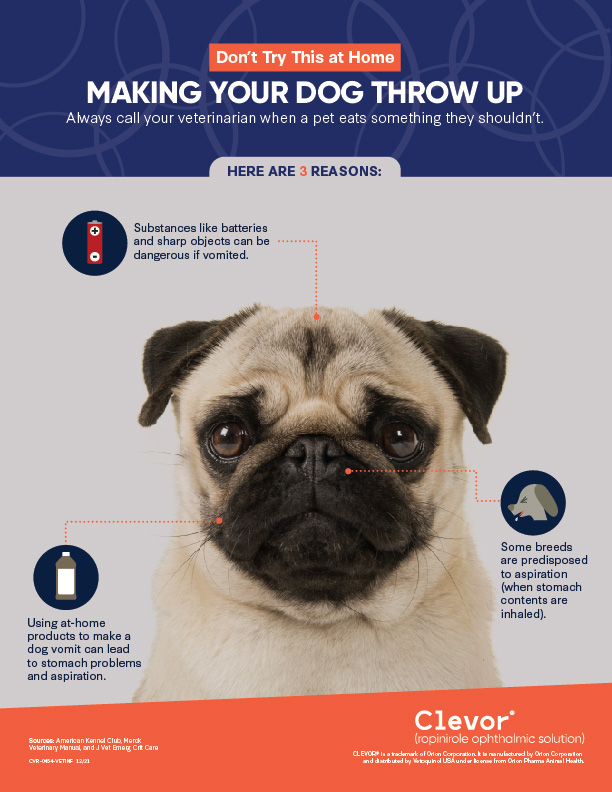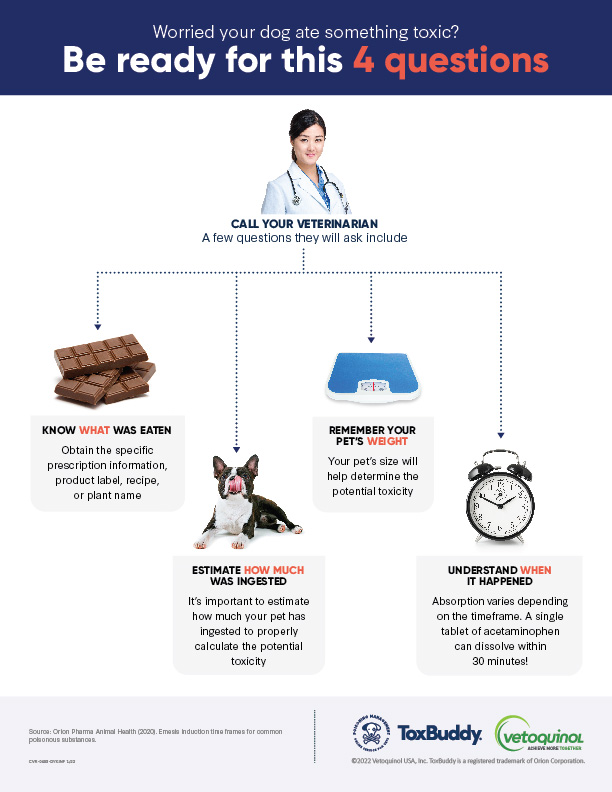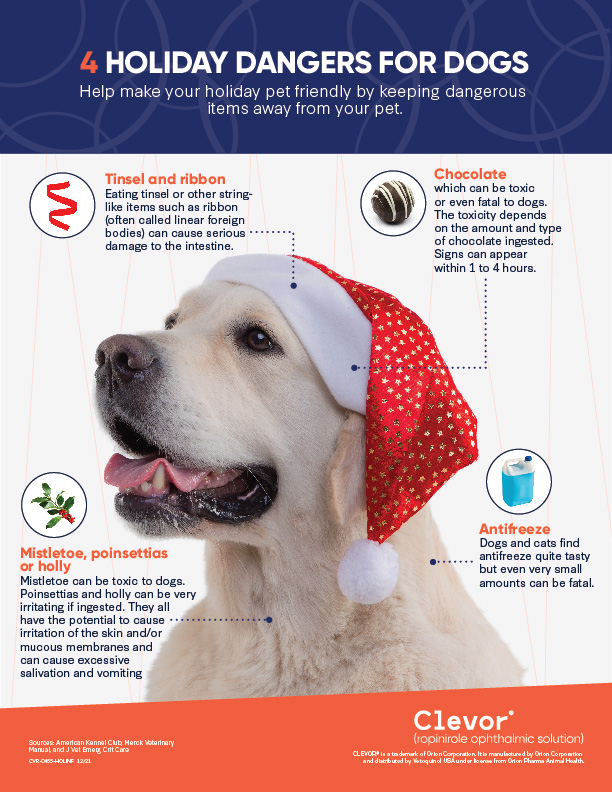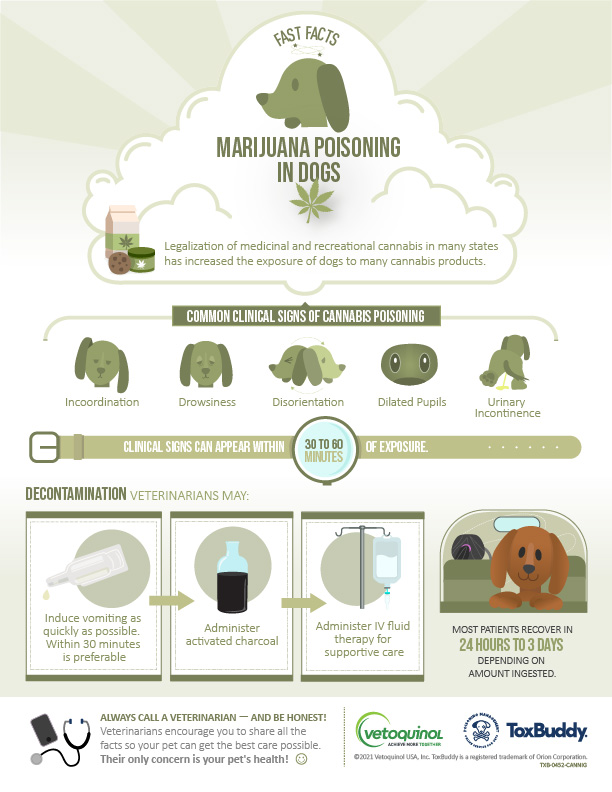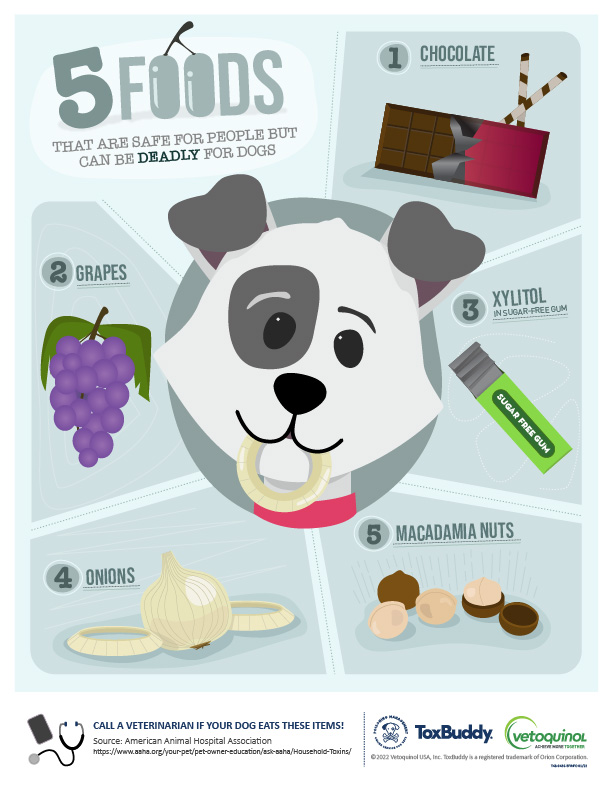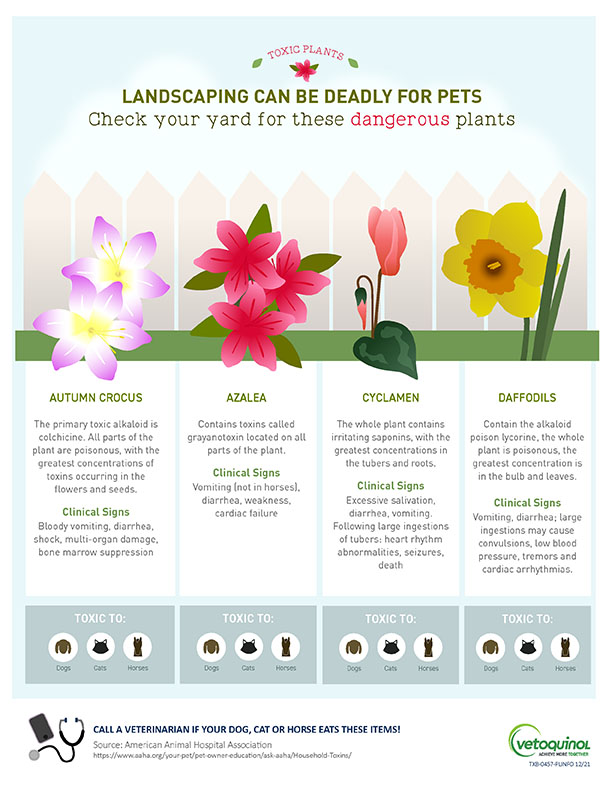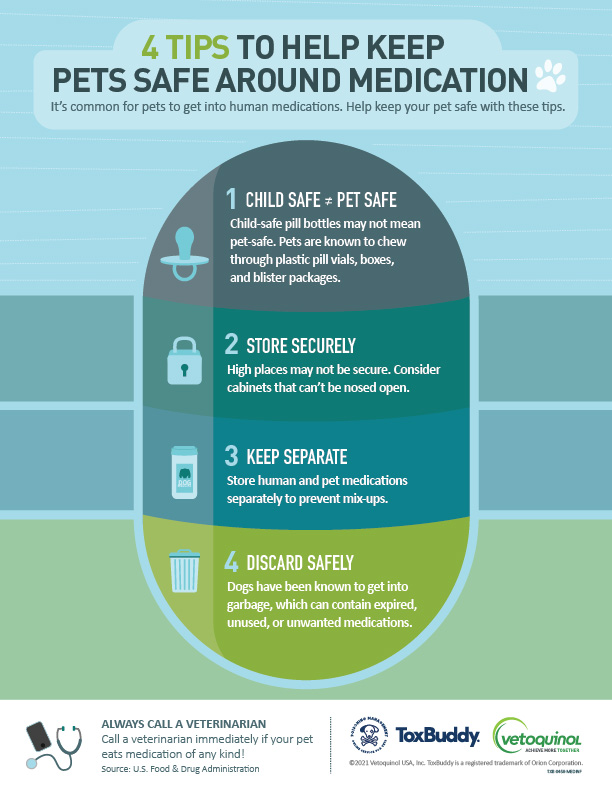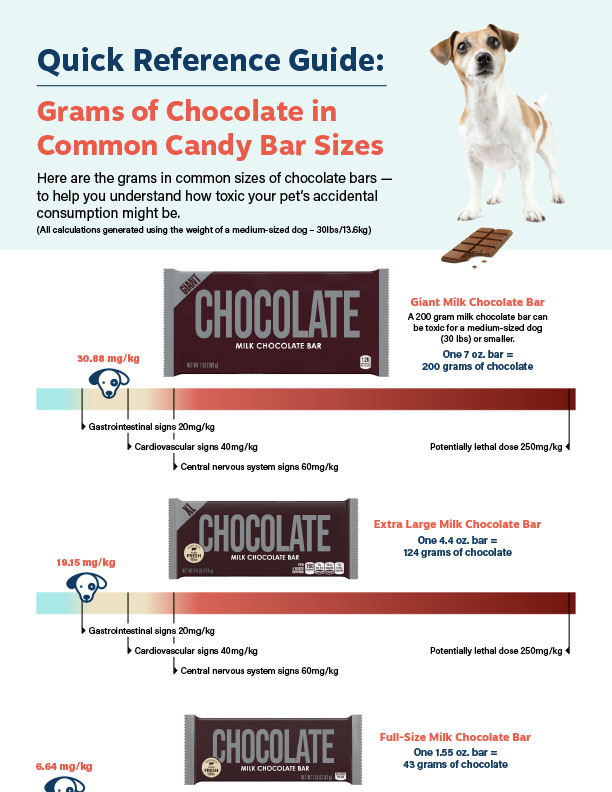Resources for Veterinarians & Staff
The best way to manage potential pet poisonings is to keep them from happening in the first place. Below are resources you can use in client education materials. Simply copy and paste into social media posts, on your website, and in emails and letters to your clients. Use the information as provided or personalize to your taste.
Contact your Vetoquinol USA Sales Representative with any questions.
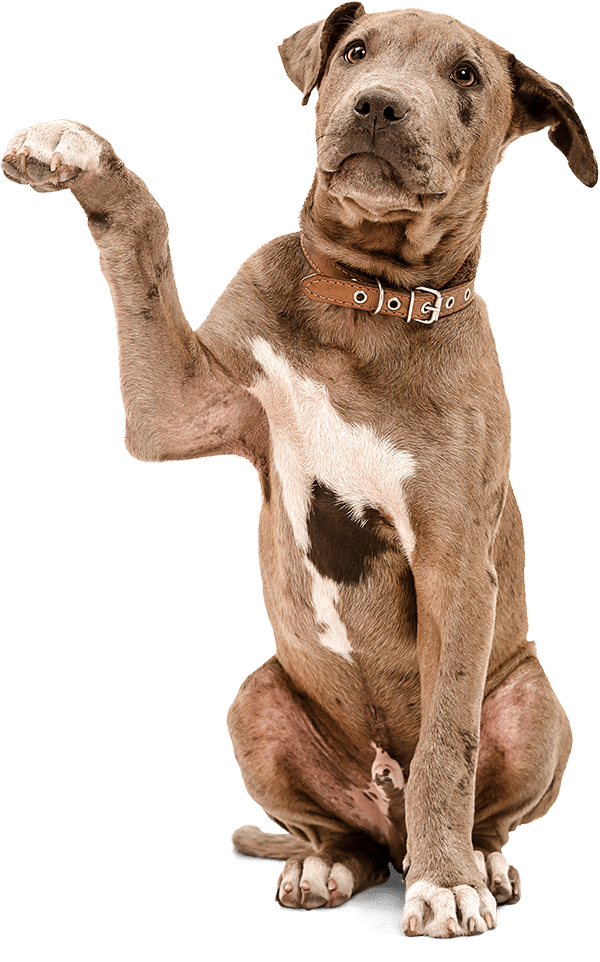
Social Media Posts
Copy and paste the desired text to your clinic’s Facebook, Twitter, or Instagram pages and follow any additional steps as instructed. Right-click the associated image and choose “Save Image As…” to save the image to your computer, then add the image to your post.
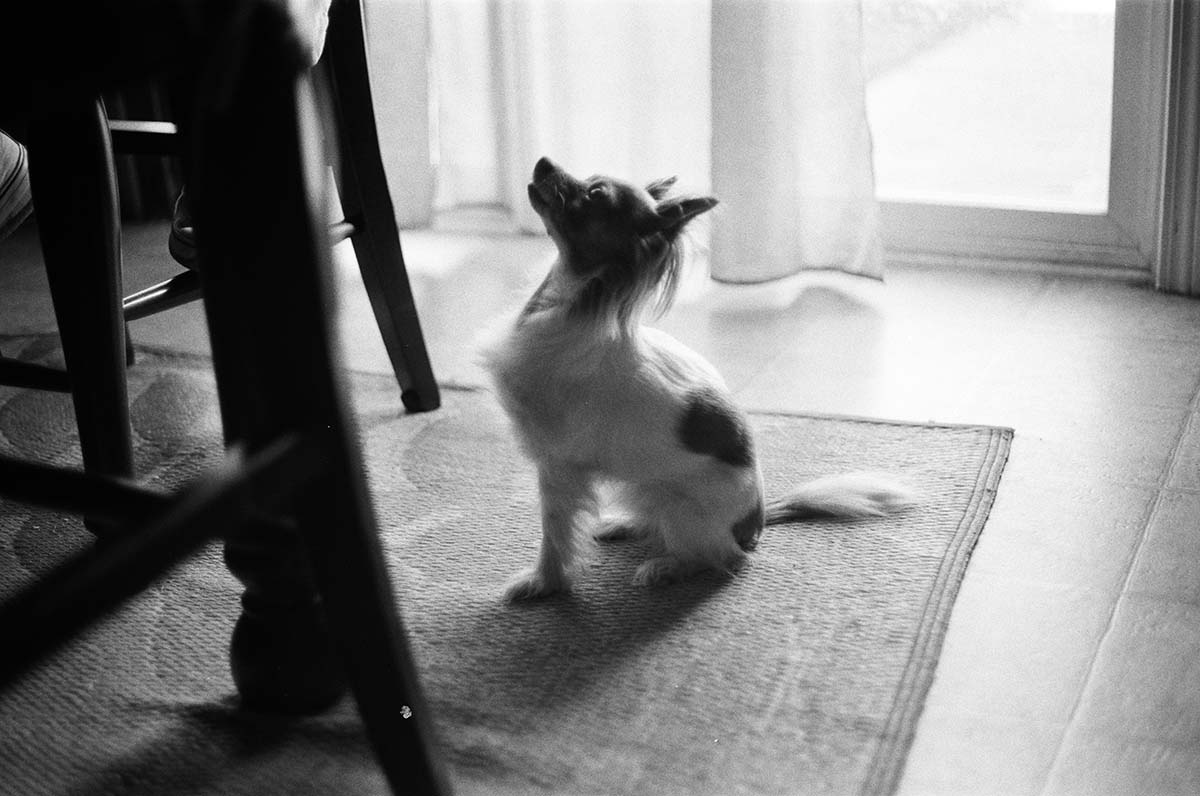
We know pets eat things they aren’t supposed to — but common foods, plants, and medications can cause serious problems. Call us any time you have a question!
#PetPoisonAwareness #PetToxins #PetSafety #PoisonPrevention
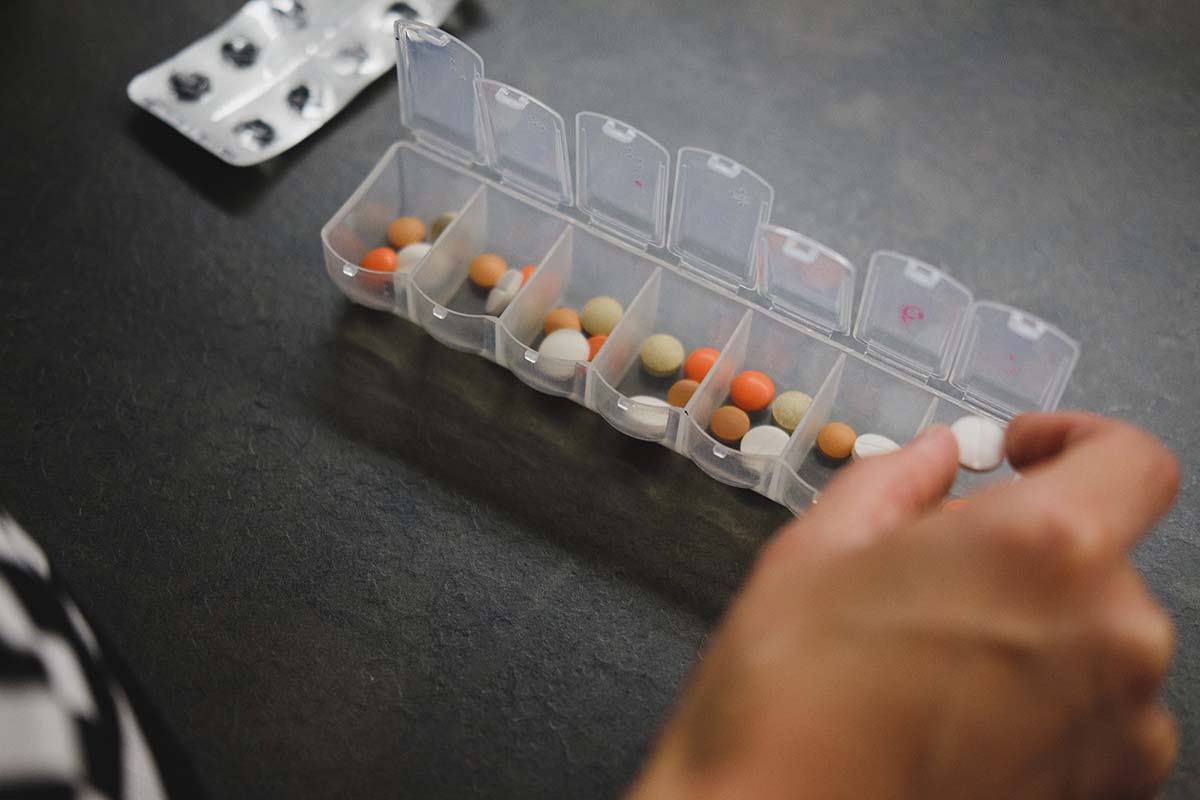
Human medications are a very common source of toxin ingestion in pets. Keep your medications away from curious paws! Always call us if there’s a question!
#PetPoisonAwareness #PetToxins #PetSafety #PoisonPrevention
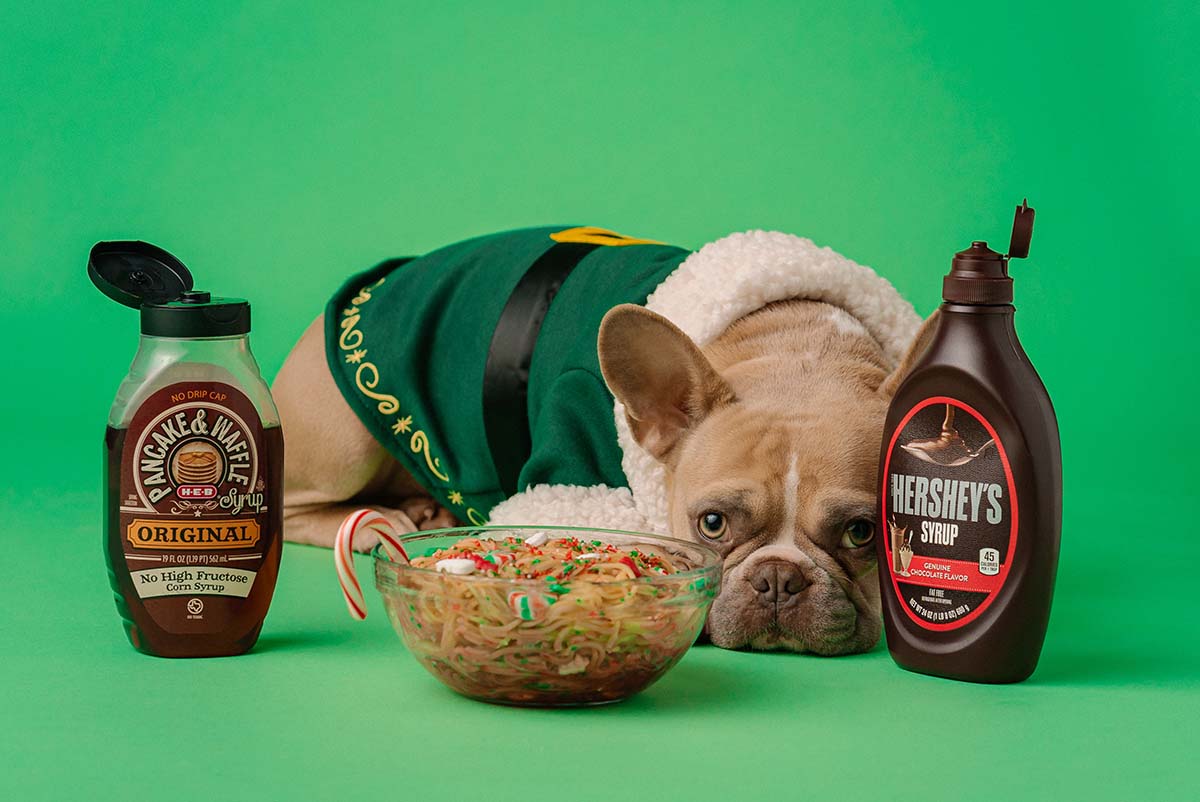
A common ingredient in sugar-free gum can be toxic to pets. Call us if you suspect your pet ate any!
#PetPoisonAwareness #PetToxins #PetSafety #PoisonPrevention

CAUTION: Rodenticides are toxic to your pets, too! Only apply in protected areas and use bait stations that are secure from pets. Always call us if you suspect rodenticide ingestion.
#PetPoisonAwareness #PetToxins #PetSafety #PoisonPrevention

If your pet’s medication is confusing, give our office a call. Incorrect dosing is actually a common cause of pet poisoning. We’re here to help!
#PetPoisonAwareness #PetToxins #PetSafety #PoisonPrevention

March is Pet Poison Awareness Month! This is a good time to prevent potential accidents by:
- Securing human medications out of the reach of curious paws
- Ensuring rodenticides are in protected areas and/or inside bait stations
- Reminding all humans in your household that pets aren’t allowed chocolate, grapes, raisins, or sugar-free gum
#PetPoisonAwareness #PetToxins #PetSafety #PoisonPrevention
Infographics
These handy infographics provide helpful information for pet parents. You can print the files for use in your clinic or send electronically to your clients. Click the images below to save a PDF to your computer. Right-click the image and choose “Save Image As…” to save the thumbnail image to your computer.
Articles
Use the following content on your clinic’s website, blog, or within a newsletter.
5 Tips for Preventing Pet Poisonings
We’d much rather see your pet for their annual wellness exam than an emergency appointment for a potential poisoning. Focusing on poison prevention can help keep your pet safe by reducing exposure to potentially deadly medications, human foods, plants, and household substances.
Fortunately, we can simply check our home and yard for dangers and make changes to try our best at preventing unfortunate incidents. Here are 10 tips to help keep your pet from ingesting toxic substances.
- Store securely: Store items like lawn and garden supplies, antifreeze, household chemicals, and human medications out of reach of pets. Curious animals can nose open cabinets, so consider locks or other pet-safe containers inside your home and garage.
- Make pest control pet safe: Rodenticides and snail/slug baits can be harmful to pets. Always use these products in a pet-safe area. When possible, use bait stations to minimize the opportunity for pets to ingest these items.
- Check your yard: Common flowers and plants can be dangerous to pets. Inspect your yard for plants such as autumn crocus, azalea plants, and daffodils to help keep pets safe. Check out this article from UC Davis for more information.
- Know human foods that are off limits: Many foods that are safe for people can be toxic to pets, such as: chocolate, xylitol in some sugar-free gum, macadamia nuts, grapes, raisins, onions, and garlic. This article from the American Animal Hospital Association (AAHA) provides a more detailed list.
- Keep human and pet medications separate: Store human and pet medications separately to prevent mix-ups.
- When in doubt, call us! Our office can help identify substances that are potentially toxic and provide information on next steps.
How much chocolate is too much chocolate for dogs?
Chocolate is potentially poisonous to dogs. It contains two substances that can be naturally occurring: caffeine and theobromine. These substances do not agree with dogs.
The potential toxicity depends on the type of chocolate and the size of the pet. Chocolate with a high cocoa content — like baking chocolate — contains more caffeine and theobromine. On the other hand, milk chocolate has a lower concentration of these substances.
Signs to watch for in the case of accidental chocolate ingestion by a dog include:
- Vomiting
- Diarrhea
- Restlessness
- Increased thirst and/or urination
- Hyperactivity
- Rapid breathing
- Abnormal, uncoordinated movement
- Seizures
Typically, chocolate also contains high amounts of sugar and fat, which may contribute to gastrointestinal signs. Some chocolate products include other potentially toxic ingredients such as xylitol, which is found in sugar-free gum. When possible, keep the ingredient list for the candy your pet may have ingested.
There’s no amount of chocolate that’s ever “good” for your dog. However, ingesting small amounts of milk chocolate is probably not harmful for most dogs.
When in doubt, call our clinic!
Reference: Orion Pharma Animal Health. (2021) Substance: Milk Chocolate. ToxBuddy. https://app.us.toxbuddy.com/. [Access date: Dec. 3, 2021]


